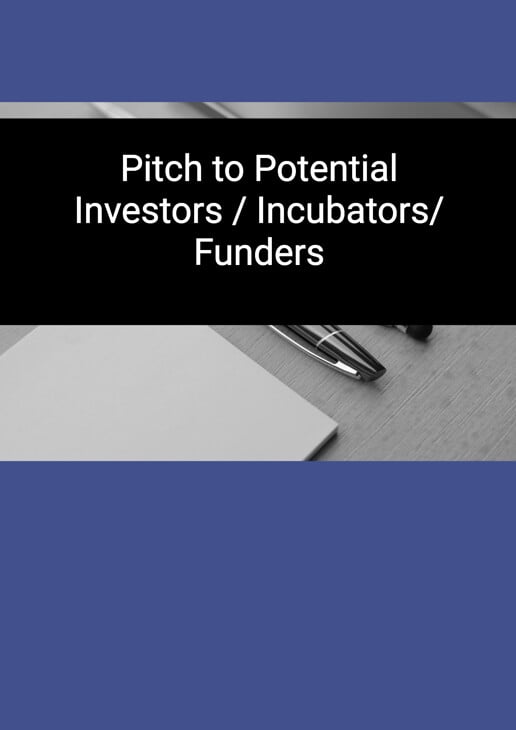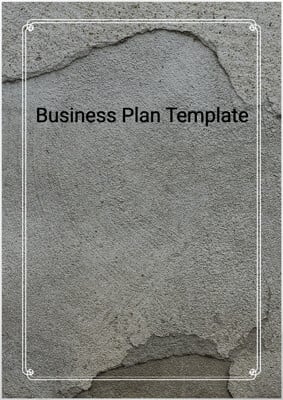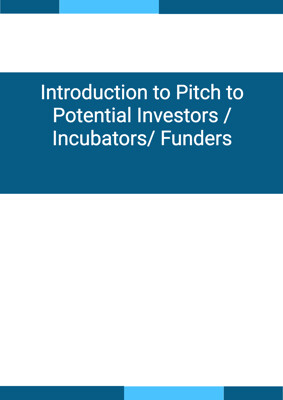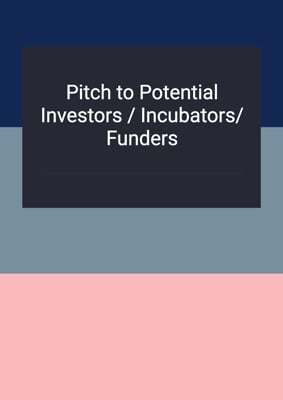How to Tailor the Document for Your Need?
01
Create Document
Click "Create Document" button and the document will be prepared with your account details automatically filled in.
02
Fill Information
Please fill in any additional information by following the step-by-step guide on the left hand side of the preview document and click the "Next" button.
03
Get Document
When you are done, click the "Get Document" button and you can download the document in Word or PDF format.
04
Review Document
Please review the document carefully and make any final modifications to ensure that the details are correct before publication / distribution.
Document Preview
Document Description
The document titled 'Pitch to Potential Investors / Incubators/ Funders' is a crucial tool for organizations seeking financial support and partnerships. It serves as a persuasive pitch to potential investors, incubators, and funders, outlining the key aspects of the organization and its proposed project(s).
The entire document is divided into several sections, each addressing a specific aspect of the pitch. The first section provides a brief introduction, highlighting the importance of the document in attracting potential investors and partners. It emphasizes the need for financial support and collaboration to bring the proposed project(s) to fruition.
The second section focuses on introducing the organization and its team. It highlights the qualifications and track record of the team members, emphasizing their expertise and experience in executing successful projects. The section also mentions the involvement of key management team members, tech support, advisors, and well-known investors, further enhancing the credibility of the organization.
The third section delves into the issue or problem that the organization aims to resolve. It briefly explains the problem without going into unnecessary details, assuming that the problem is already known or obvious to the audience.
The fourth section highlights the solution or product offered by the organization and its value to the users. It explains how the proposed project(s) help in resolving the identified issue and emphasizes the benefits that users can derive from the organization's offerings. It also paints a vision of a world where the organization's project(s) have made a significant impact.
The fifth section focuses on the customer base, market size, and landscape. It identifies the target audience for the organization's project(s) and provides figures on the market size. It also explores whether the project(s) represent a blue ocean opportunity, indicating the potential for high margins and a billion-dollar market.
The sixth section addresses user acquisition and marketing strategies. It outlines various channels and techniques used to acquire customers, such as organic marketing, word of mouth, viral marketing, social media, and search engine optimization. It also mentions the conversion rate and churn rate, providing insights into the effectiveness of the organization's marketing efforts.
The seventh section discusses the business model of the organization. It explains how the organization generates revenue and outlines the profit margins. If the organization is not generating revenue yet, it presents a plan for future monetization. It also mentions how the generated funds would be utilized, whether reinvested into projects or donated to relevant causes.
The eighth section analyzes the competition and market adoption of similar technologies or solutions. It identifies the competitors and evaluates their performance in the market. It also explores how the market is adapting to new technologies, indicating the potential for the organization's project(s) to thrive.
The ninth section highlights the competitive advantages and defensibility of the organization. It identifies the unique selling points that differentiate the organization from its competitors. These advantages may include being the first to market, offering incentives, ease of use, design, brand reputation, or exceptional user experience.
The final section focuses on the next stage, budget, and resource requirements. It outlines the amount the organization is seeking to raise for the next stage and provides insights into the budget. It also specifies the resources needed to grow or scale the organization and capture the identified opportunity. Additionally, it mentions the type of support required from the person being pitched, such as financial support, network connections, infrastructure, or IT support.
In summary, the document provides a comprehensive and detailed pitch to potential investors, incubators, and funders. It covers all essential aspects, including the organization's introduction, problem statement, solution, market analysis, marketing strategies, business model, competition, competitive advantages, and resource requirements. It aims to convince the audience of the organization's potential and the benefits of investing or partnering with them.
How to use this document?
1. Clearly introduce the organization and its proposed project(s), emphasizing the importance of financial support and partnerships.
2. Highlight the qualifications and track record of the team members, including key management, tech support, advisors, and well-known investors, to enhance credibility.
3. Briefly explain the problem that the organization aims to resolve, assuming the audience is already aware of it.
4. Emphasize the value of the organization's solution or product and how it benefits the users, painting a vision of a transformed world.
5. Identify the target audience and provide figures on the market size, showcasing the potential for high margins and a billion-dollar opportunity.
6. Outline the user acquisition and marketing strategies, including organic marketing, word of mouth, viral marketing, and social media.
7. Explain the business model, revenue generation methods, profit margins, and plans for future monetization.
8. Analyze the competition and market adoption, evaluating competitors' performance and the potential for the organization's project(s) to succeed.
9. Highlight the competitive advantages and defensibility of the organization, emphasizing unique selling points that differentiate it from competitors.
10. Specify the amount sought for the next stage, provide budget insights, and outline the resources needed to grow or scale the organization.
11. Clearly communicate the type of support required from the person being pitched, such as financial support, network connections, infrastructure, or IT support.
12. Focus on real practice and implications rather than completing the document itself.
Not the right document?
Don’t worry, we have thousands of documents for you to choose from:









